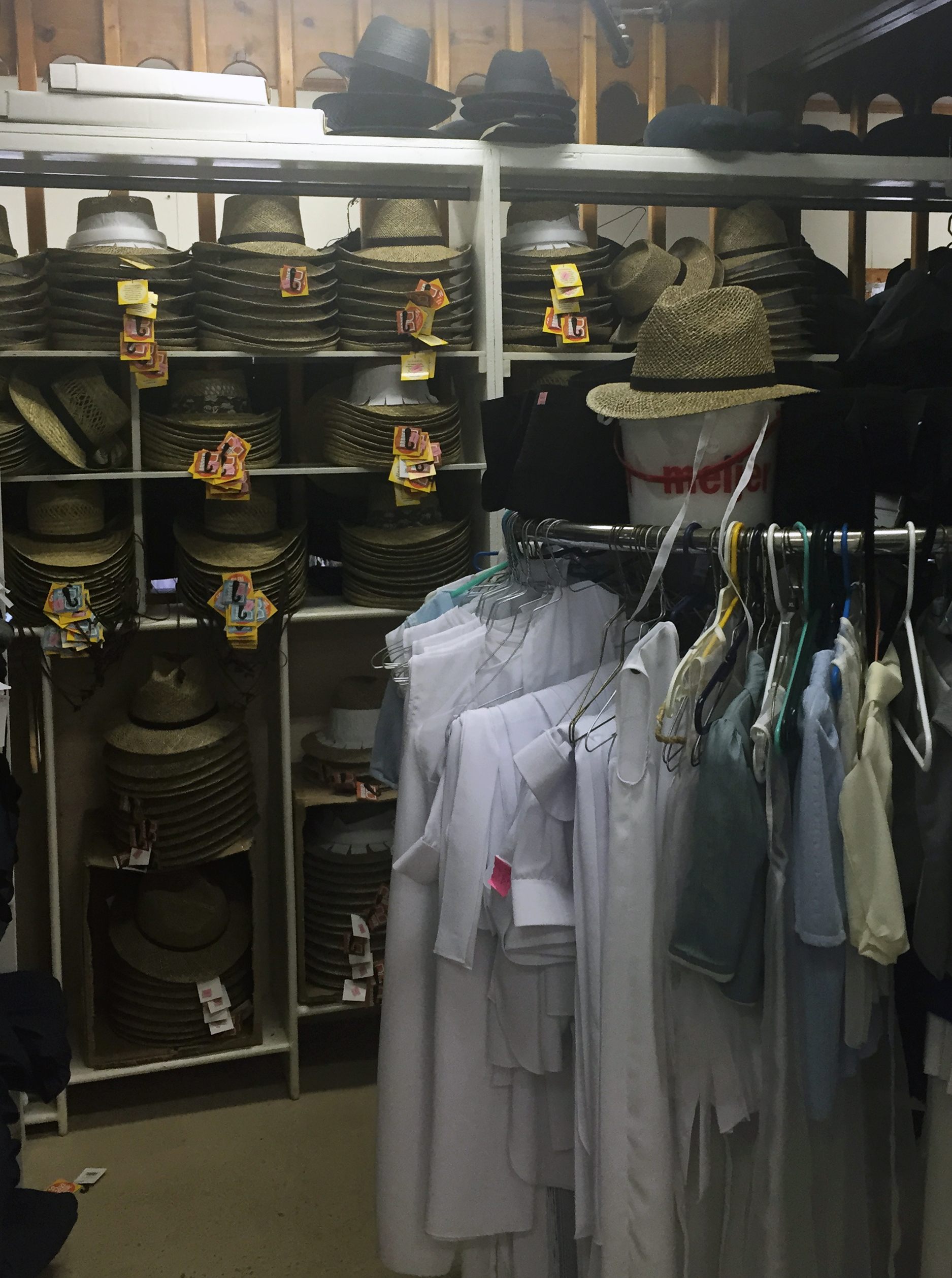The Inter-Amish Language Barriers of Indiana
In the eastern part of the state, a dialect like no other quietly endures. But for how long?

The once unthinkable on the streets of Berne, Indiana: a closed buggy. The vast majority of buggies in the Berne area are still “open” but that is changing. (Photo: Kevin Williams)
There’s a grid of rural roads in eastern Indiana where, if you’re lucky, and you listen carefully, you might hear yodeling. When I first heard it 25 years ago, I had no idea I had stumbled onto a sliver of Switzerland on the Indiana prairie.
This yodeling is not the shrill sound popularized in Hollywood caricatures. It’s a seamless, haunting harmony emanating from another century’s daguerreotype. The sounds are made by people whose heads are covered in crisp, black caps; boys in suspenders, around a coal stove. The youngest, barely old enough to toddle, will chime in with a few notes, while the oldest fills the room with a gravelly harmony.
For the Swiss Amish of Adams County, Indiana, yodeling is a part of their language. It’s a dialect that stands apart, both from the non-Amish world, and even from other Amish communities. The question that haunts many here today is, how long can this dialect last?
There is a necklace of Swiss Amish settlements in eastern Indiana extending from Grabill in the north to Milroy in the south. At the center are Berne and nearby Geneva (each named after the Swiss cities, with Bern given an extra “e.”). The Amish here speak a completely different dialect than the vast majority of Amish in major settlements like Lancaster County, Pennsylvania and Holmes County, Ohio, who speak a more traditional mainstream dialect of high German.
The different language serves as a sort of insulation for the Swiss Amish, limiting much interaction between the two groups. For instance, in Wayne County, about 40 miles south of Geneva, is a community of Amish who moved from Lancaster County, Pennsylvania in the late 1990s. Their dialect, customs, and traditions are very different from the Amish of Geneva and Berne. (Among the Swiss Amish “raisin pie” is a staple of wedding menus. Among the Wayne County Amish, raisin pie is served so commonly at funerals that the pie has earned the moniker “funeral pie.”)

The historic downtown of Geneva, Indiana. (Photo: Nyttend/Public Domain)
Greg Humpa, who has a Ph.D. in linguistics and is now an administrator for the Kapor Center for Social Impact in San Francisco, spent months surveying the Swiss Amish for his Purdue University dissertation in the early 1990s. In doing so, he was able to trace the exact origin of the Swiss German spoken among the Indiana Amish. It is, he says, a High Alemannic dialect, of the kind spoken in most of German-speaking Switzerland. The Alemannic German is also found in the Alsace region of France where many Amish in Geneva-Berne have their roots.
Humpa goes on to explain that the ancestral homeland of the Adams County Amish is the Emmental region of Canton Bern. Despite the fact that the Amish community has had intense contact with other dialects during periods of persecution-induced migration in Europe, and with Pennsylvania German and English in the U.S., the modern-day Swiss German of Adams County would still be recognized by a visitor from the Emmental as a kindred variety, Humpa says.
Mark Loudon, a professor of German at the University of Wisconsin and co-director of the Max Kade Institute for German-American Studies, has studied the various permutations of Amish dialects extensively and describes the differences this way: “Pennsylvania Dutch is related most closely to dialects from the Palatinate region of central-southwestern Germany, while Amish Swiss German is descended from Swiss German dialects, which are quite distinct from Palatine German dialects.”
Guido Seiler, Chair of Germanic linguistics at the Ludwig Maximilians University of Munich, says Swiss Amish speakers are well aware of the linguistic difference between Swiss and Pennsylvania Dutch. He mentions the Swiss Amish joke about the Pennsylvania Amish: “si visse nid vie racht shwatze” (they don’t know how to speak right).
In addition to their different dialect, the Swiss Amish are distinguished by other quirky customs not found elsewhere, like the yodeling, and the practice of putting celery in vases on the table at weddings. The Amish in the area sit in open buggies, bundled up in thick horse blankets and expertly wielding umbrellas to, depending on the time of year, shade them from the roasting heat or shield them from the piercing rain (although one Amish church in the area has recently started allowing closed buggies, a sign of change in Berne). Also, the community has an affinity for cases of Pepsi and Mountain Dew; in an odd cultural juxtaposition, I’ve seen buggies loaded down with cases of soda.

Riding in an open buggy in bad weather, Berne, Indiana. (Photo: Kevin Williams)
When I first ventured into the Swiss Amish enclave of Geneva during the summer of ‘91, I was a wide-eyed idealistic college journalism student. Through a chance encounter I teamed up with an Amish grandmother who agreed to write a weekly column that I syndicated in over 100 newspapers from coast to coast. As editor of the column and Amish culture website Amish365.com, I’ve likely been to more Amish settlements than anyone in the world, exploring far-flung, remote communities from Maine to Montana, from Texas to Florida, in order to document the different customs from place to place.
Yet it was in the fields east of Berne and Geneva that I learned the most about the Amish. They first arrived here in 1850. With most Amish families in the area having six or more children—I once ran into a family with 17—their population is estimated to double every generation. Currently there are about 10,000 Amish in Adams County, Indiana, an unsustainable size that has sent some Amish packing to other areas where the Swiss language isn’t the norm.
Berne draws much of its identity from its Swiss namesake. The downtown buildings are festooned with Swiss imagery, and flags of the neutral nation line the main street. There’s Swiss City Real Estate, the Swiss City Medical Center, the Swiss Hair-itage Salon, and even the Swiss Lock Box Storage. The main florist shop in town is named Edelweiss after the elusive white flower that grows high in the Swiss Alps. But the capstone of all things Swiss in Berne is the imposing 160-foot Muensterberg Plaza and Clock Tower, completed in 2010 to pay homage to a similar structure in Bern. The Amish live outside town; Berne is comprised largely of Mennonites espousing varying degrees of conservatism.

Amish houses in Berne. (Photo: Kevin Williams)
I visited the Swiss Heritage Society in Berne, hoping to get a better insight into what brought settlers from a land of such beauty to the marshy headwaters of the Wabash River. “Oh it wasn’t the scenery that brought them here,” explained a docent. “It was the cheap land, $1.25 an acre.”
Eastern Indiana is where the presence of the Swiss Amish is the strongest, but there is a sister settlement in Seymour, Missouri. And elements of Swiss Amish culture are alive in Guthrie, Kentucky and Degraff, Ohio. Seiler suspects the smaller “daughter” settlements of Berne have each developed their own slightly different Pennsylvania Dutch-influenced version of Swiss.
But things are changing, even for the traditionally slow-to-change Amish. The change is most visible along the edges, but it is slowly seeping in everywhere. One of the edges is Grabill, Indiana (another is Milroy, Indiana where it seems most traces of the Swiss dialect have vanished over the past 20 years).
“The problem is when you get Amish people together from other areas with the ones here, they have trouble understanding one another, so they both revert to English,” says Festus Graber, a jovial Amish drywall installer in Grabill. The preference for English is degrading the Swiss language, little by little.
“It’s not a big deal to me, I can converse anywhere with anyone,” says Graber. Many Amish share his nonchalance at the language. The overwhelming sentiment is that what happens is God’s will. Graber’s wife was raised speaking Amish Swiss, a language which he says is in the minority and on the decline in Grabill.

Amish men’s wear hats in the Amish-owned Katie’s Kountry Korner store in Grabill. (Photo: Kevin Williams)
The Swiss Amish have hung onto a flash-frozen dialect that has changed little in 200 years. So when technological or societal shifts introduce new words, there’s no Swiss Amish equivalent. You’re left with a Swiss stew that includes gradually larger chunks of English. Still, remove the English and someone visiting the area from a time machine set to 19th-century Switzerland would have no trouble navigating—or less trouble than traditional Amish do with the Swiss Amish.
I was trying to talk the traditional Pennsylvania Dutch language to an Amish family in Berne when I erroneously used an Alemannic Swiss word for pig to refer to one of the young ladies in the family. The word in more traditional Pennsylvania Dutch had a completely different, complimentary meaning. The father, not amused, immediately rose from his chair, probably to show me the door. I quickly caught my mistake, and, red-faced, explained. I was able to stick around for supper.
Another significant element that has accelerated the decline of the unique Swiss dialect in Indiana is the emerging “factory culture.” For most of their history in the United States the Amish have lived in relative agrarian isolation. But as micro-farming began to become less and less viable as a way to make a living (and land became less plentiful) the Amish had to find other ways to make a living. In some areas it has been cabinetry and carpentry. In other places, like northern Indiana and the Berne area, the answer was factory work. This work, though, put Amish in constant contact with English-speaking non-Amish, which eroded the language.

A milk-house with solar-power, a sign of the changing times in Grabill. (Photo: Kevin Williams)
Abraham Schwartz lives on a quiet plot of land north of Geneva with his wife and 13 children. The youngest is six months; the eldest is 22, a just-married daughter. Abraham used to work in a factory before he tired of the impact it had on his way of life. He now works long days as a self-employed carpenter and runs a greenhouse.
“I’d still rather do this than factory work,” he says. “At least I get to work with two of my boys every day.” And he doesn’t have to contend with cultural issues. “There’s a lot of coarse language and bad habits in the factories. Some of these young men go into the factory and are exposed to habits that maybe just aren’t in line with what our way of life is about.”
I asked him about the yodeling.
“The yodeling is good fellowship, a way for the family to have a good time together without spending a lot of money,” Schwartz said. “There’s too much that’s bad for our children to get into today, which is why we try to keep them entertained here at home. I think it would be sad if the yodeling and the language fell by the way side, the younger ones don’t seem as interested, many of them would rather speak English.”
The Amish are an organic, vibrant culture. Beneath their seemingly monolithic, unchanging exterior there are fierce debates within about boundaries with technology, church rules, and language. Change comes slowly. But it comes.
The Swiss culture has survived in east-central Indiana for almost 150 years. The language has survived the onslaught of the automobile, suburban sprawl, the migration from farm to factory, and the arrival of the internet. Can it survive the ultimate language killer: time? That remains to be seen. In the meantime, if you drive the grid of rural roads east of Berne, if you’re lucky, you just might hear the same haunting harmony I’ve heard: a yodel, whispering in the wind, a linguistic link spanning two centuries and two continents.
Update 5/5: An earlier version of this story included an incorrect photo caption, identifying Geneva, Indiana, as Illinois. We regret the error.










Follow us on Twitter to get the latest on the world's hidden wonders.
Like us on Facebook to get the latest on the world's hidden wonders.
Follow us on Twitter Like us on Facebook